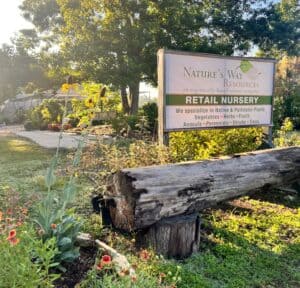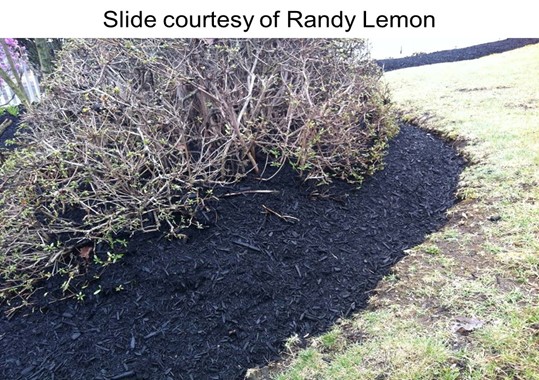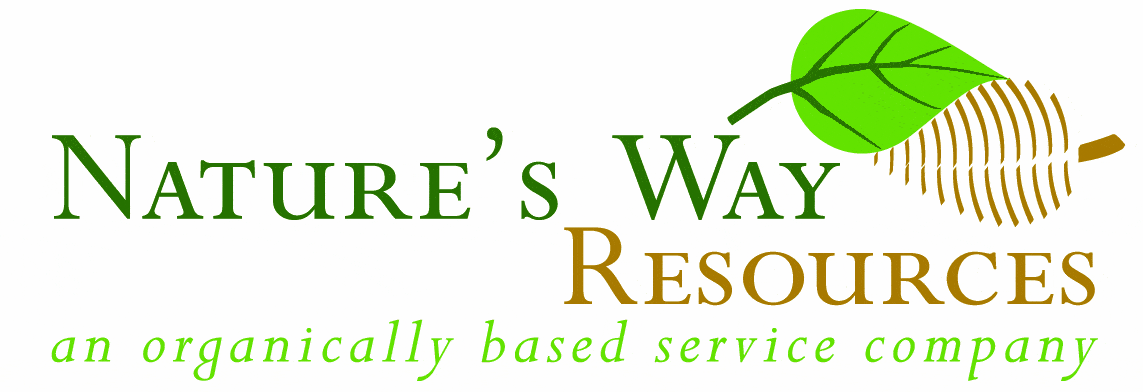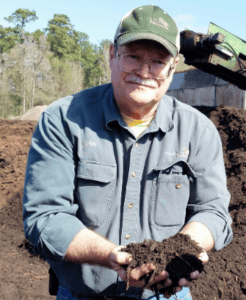 Nature’s Way Resources is proud to produce & email you this free weekly newsletter. We have no ads, but sponsors do graciously help support this project as a public service. Please note their names below & show your gratitude for this free service by patronizing their businesses! To become a sponsor, call (936) 273-1200
Nature’s Way Resources is proud to produce & email you this free weekly newsletter. We have no ads, but sponsors do graciously help support this project as a public service. Please note their names below & show your gratitude for this free service by patronizing their businesses! To become a sponsor, call (936) 273-1200
Nature’s Way Resources owner John Ferguson, “The Lazy Gardener” Brenda Beust Smith and Pablo Hernandez welcome your feedback and are so grateful to the many horticulturists who contribute their expertise
Click here to join our email list
CLICK HERE for PDFs OF PAST LG&F NEWSLETTERS
 CAMELLIA ‘YUME’ blooming now in the Asian Section of Houston Botanic Garden’s Global Collection Garden and Woodland Glade.
CAMELLIA ‘YUME’ blooming now in the Asian Section of Houston Botanic Garden’s Global Collection Garden and Woodland Glade.
WITH WINTER COMES
DIFFERENT (NEW?)
GARDEN OUTLOOKS!
BY BRENDA BEUST SMITH
OUR PAST FEW WINTERS have everyone looking for more cold hardy plants. Nowhere is there a better resource for our home gardens than our two major botanical gardens:
- Houston Botanic Garden, south of downtown Houston
- Mercer Botanic Garden to the north
Not many cities can boast two such internationally-recognized horticultural gardens! If you haven’t visited both, now — with all the lights & decorations — is a perfect season for the whole family. Even non-gardening members will be awed by displays, while gardeners surely want to know what’s in bloom, especially mature plants that obviously can withstand our recent cold winters, blasting hot summers, prolonged droughts and infuriating floods!
In the meantime, click both websites for maps, seasonal delights and activity calendars. Both are great places to see winter bloomers and LOTS more!
 NEXT WEEK, we’ll spotlight Mercer’s now-in-bloom plants. This week — in Spotlight Article below, COLIN A. LYMAN, Houston Botanic Garden’s Associate Director of Horticulture, advises on great gingers for us. While not in full bloom now, this gives you time before spring to decide which ones to plant where and to see how HBG positions them while enjoying HBG’s incredible holiday lights show “RADIANT NATURE“!
NEXT WEEK, we’ll spotlight Mercer’s now-in-bloom plants. This week — in Spotlight Article below, COLIN A. LYMAN, Houston Botanic Garden’s Associate Director of Horticulture, advises on great gingers for us. While not in full bloom now, this gives you time before spring to decide which ones to plant where and to see how HBG positions them while enjoying HBG’s incredible holiday lights show “RADIANT NATURE“!
 CONGRATULATIONS, URBAN HARVEST! This unique horticultural (mostly) volunteer group is celebrating 30 years of educating Houstonians about organic gardening and more. Urban Harvest serves 45,000+ Farmers Market patrons with fresh, local produce; providing nearly 4,500 students/teachers in socially-vulnerable areas with hands-on education; helped 3,823 community gardeners preserve 34+ acres of urban green space, promoting sustainability, access to healthy food and provided 2,000+ customers with affordable, healthy, local food. You can help! urbanharvest.org/support/
CONGRATULATIONS, URBAN HARVEST! This unique horticultural (mostly) volunteer group is celebrating 30 years of educating Houstonians about organic gardening and more. Urban Harvest serves 45,000+ Farmers Market patrons with fresh, local produce; providing nearly 4,500 students/teachers in socially-vulnerable areas with hands-on education; helped 3,823 community gardeners preserve 34+ acres of urban green space, promoting sustainability, access to healthy food and provided 2,000+ customers with affordable, healthy, local food. You can help! urbanharvest.org/support/

 ATTN. GARDEN/PLANT GROUPS — In wake of Hurricane Beryl, Nature’s Way Resources offers free guided tours of NWR’s extensive nursery/soil/mulch facilities for garden clubs, plant societies and other plant-oriented, organized groups. As usual, NWR’s now-expanded meeting site is free to above groups. Reservations a must for both.
ATTN. GARDEN/PLANT GROUPS — In wake of Hurricane Beryl, Nature’s Way Resources offers free guided tours of NWR’s extensive nursery/soil/mulch facilities for garden clubs, plant societies and other plant-oriented, organized groups. As usual, NWR’s now-expanded meeting site is free to above groups. Reservations a must for both.
“LAZY GARDENER’S GUIDE” (PDF format) is emaild free. Request: lazygardenbrenda@gmail.comBrenda Beust Smith’s column is based on her 40+ years as the Houston Chronicle’s “Lazy Gardener” column — lazygardenerbrenda@gmail.com Brenda’s column focuses ONLY on the Greater Houston Area
Spotlighting…
HOUSTON BOTANIC GARDEN

GREAT GINGERS FOR HOUSTON: Globba schomburgkii, Curcuma caesia, Hedychium coccineum ‘Disney’ and Hellenia speciosa
DESPITE CHALLENGES, GINGERS REALLY DO LIKE HOUSTON AREA!
By COLIN A. LYMAN
Houston Botanic Garden
Associate Director of Horticulture
Since Houston, over the last few years, has experienced more consistent freezes, we try to find plants to add to our collection that can withstand the heat and humidity of the summer, and the short freezes we get in the winter.
This is sometimes a challenge when temperatures can change drastically. A good amount of plant species can withstand cold and heat, but if there isn’t a period of transition, or consistent drop in temperature over a longer period of time, the plants struggle to adapt to dramatic shifts in temperature, much like we do.
Despite this challenge there are a lot of cultivars and species of ginger that grow well in the Houston climate. In the event of a freeze the plants foliage dies back, but the underground rhizomes send up new growth in the spring as the weather warms up.
Some gingers however don’t withstand the freezes, sudden drops in temperature, or cold weather and are not as consistent in sending up new growth after a freeze. This inconsistency makes them more difficult to grow in our region, so we try to lean in to the species that can bounce back after cold temperatures.
The species below are the ones we recently planted in our tropical garden that from experience of staff, we think will bounce back consistently after freeze events. We plan to monitor their success over the next few years to withstand freezes.
- Globba schomburgkii
- Globba grandis
- Curcuma caesia
- Curcuma ‘Great Reign’
- Costus phyllocephalus
- Costus varzerum
- Hedychium ‘Palani’
- Hedychium coccineum ‘Disney’
- Hellenia speciosa
EDITOR’S NOTE: If you’ve never attended Houston Botanic Garden’s annual Christmas season “RADIANT NATURE” celebration, be sure to check this link above for parking and entrance directions. Tickets must be purchased in advance to park at the garden. (Presented by Reliant)
John’s Corner
NEWS FROM THE WONDERFUL WORLD
OF SOIL AND PLANTS # 311
Subject: Mulch
I have been asked several times recently, “What is the best time to mulch and what is the best type of mulch?”
Fall is the best time to mulch as one of the principles of successful gardening is to copy nature. However, anytime is better than not at all. Nature hates bare ground and if there is not any mulch nature will cover it with plants often referred to as weeds.
This brings us to the second question, “What is the best type of mulch?” Texas does not have labeling laws hence the price point that it sells for is a good indicator. As in all things, higher quality generally costs more.
Mulch can be broken into three basic types based on its quality and usage. These types are Biological, Commercial, and Industrial.
Biological – This is the highest quality mulch and therefore the most beneficial in improving soils, preventing disease, protecting plants, etc. It has a low carbon-to-nitrogen ratio, so it does not steal nitrogen from the soil and weaken or stress plants. It has been composted to kill weed seeds and pathogens. Composted “native mulch” and “coarse screened compost” are examples of this class of mulch. Aged Native Mulch, if made correctly, is the very best mulch for our flower beds. The bag will have holes in it so that air can enter allowing the beneficial microbes to breathe and be kept alive. This mulch will typically sell retail for $8-12 per bag (2 cubic feet).
Commercial – This is a middle grade of mulch made from tree barks (pine, hardwood, etc.) and is the most common. It will be in a sealed bag and may have a sour, stale or strong odor. It has a high carbon-to-nitrogen ratio and robs soil of nitrogen and other nutrients. Tends to float off in heavy rain or develops unsightly molds and fungal mats and may attract fire ants or termites. Often becomes hydrophobic and will repel water and is often flammable. This mulch will typically sell retail for $4-6 per bag (2 cubic feet).
Industrial – This is the lowest grade of products called mulch. It is made from industrial waste like old pallets, construction wood, etc. It is often chemically burned black with industrial waste like coal ash, it will sometimes rub off in your hand, and it is often dyed various colors. It may contain arsenic from CCA treated waste wood. It has a very high carbon-to-nitrogen ratio and robs nitrogen and other nutrients from the soil for a long time. It may be extremely alkaline and high in toxic salts. It is often harmful to plants and soil and creates many problems. It is also very flammable. This product will typically sell retail for $3-4 per bag (2 cubic feet).
The picture below courtesy of the late Randy Lemon illustrates a dyed mulch killing plants.

As in all things, one gets what they pay for or as the old adage states, “Buyer Beware”.
SPONSORSHIP
If you are interested in becoming a sponsor, please contact us at 936-273-1200 or send an e-mail to: lazygardenerandfriends@gmail.com
ABOUT US
BRENDA BEUST SMITH WE KNOW HER BEST AS THE LAZY GARDENER . . . but Brenda Beust Smith is also:
- a national award-winning writer & editor
- a nationally-published writer & photographer
- a national horticultural speaker
- a former Houston Chronicle reporter
When the Chronicle discontinued Brenda’s 45-year-old Lazy Gardener” print column — started in the early ’70s as a fun side-project to reporting, it then ranked as the longestrunning, continuously-published local newspaper column in the Greater Houston area. The name, she says, is not just fun, it’s true. Brenda’s gradual sideways step from reporter into gardening writing led first to an 18-year series of when-to-do-what Lazy Gardener Calendars, then to her Lazy Gardener’s Guide book which morphed into her Lazy Gardener’s Guide on CD, which she now emails free upon request. Brenda became a Harris County Master Gardener and, over the years, served on theboards of many Greater Houston area horticulture organizations. She hosted local radio and TV shows, most notably a 10+-year Lazy Gardener specialty shows on HoustonPBS (Ch. 8) and her call-in “EcoGardening” show on KPFT-FM. For over three decades, Brenda served as Assistant Production Manager of the GARDEN CLUB OF AMERICA’S “BULLETIN” magazine. Although still an active broad-based freelance writer, Brenda’s main focus now is THE LAZY GARDENER & FRIENDS HOUSTON GARDEN NEWSLETTER with John Ferguson and Pablo Hernandez of Nature’s Way Resources. A native of New Orleans and graduate of St. Agnes Academy and the University of Houston, Brenda lives in Humble, TX, and is married to the retired Aldine High School Coach Bill Smith. They have one son, Blake. Regarding this newsletter, Brenda is the lead writer, originator of it and the daily inspiration for it. We so appreciate the way she has made gardening such a fun way to celebrate life together for such a long time.
JOHN FERGUSON
John is a native Houstonian and has over 35 years of business experience. He owns Nature’s Way Resources, a composting company that specializes in high quality compost, mulch, and soil mixes. He holds a MS degree in Physics and Geology and is a licensed Soil Scientist in Texas.
John has won many awards in horticulture and environmental issues. For years he represented the composting industry on the Houston-Galveston Area Council for solid waste. His personal garden has been featured in several horticultural books and “Better Homes and Gardens” magazine. His business has been recognized in the Wall Street Journal for the quality and value of their products. He is a member of the Physics Honor Society and many other professional societies. John is the co-author of the book Organic Management for the Professional.
For this newsletter, John contributes articles regularly and is responsible for publishing it.
PABLO HERNANDEZ Pablo Hernandez is the special projects coordinator for Nature’s Way Resources. His realm of responsibilities include: serving as a webmaster, IT support, technical problem solving/troubleshooting, metrics management and quality control. Pablo helps this newsletter happen from a technical support standpoint.
Download the Newsletter with Our Events Calendar Below!


